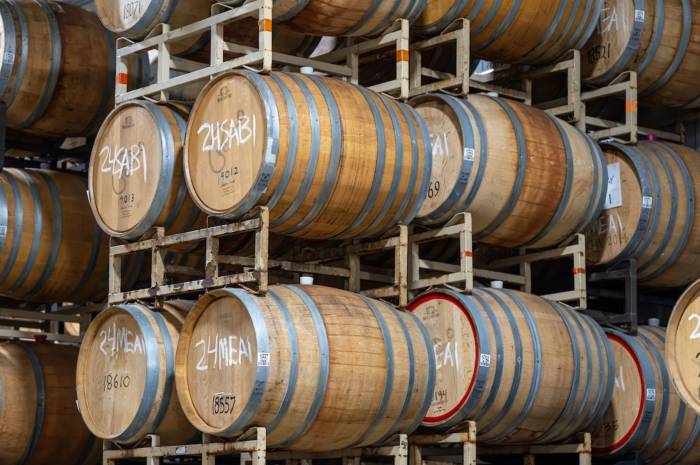Texas Emerges as Global Wine Industry Leader With Unique International Status
State’s observer role in key wine organization boosts research, economic impact, and innovation across diverse vineyards and communities
2025-09-25

Texas has become a significant player in the global wine industry, thanks to its unique status as the only U.S. state with observer status in the International Organisation of Vine and Wine (OIV). The OIV is an intergovernmental body that brings together 51 member countries, including leading wine producers such as France, Spain, and Italy. It sets international standards for viticulture and winemaking, and its observer organizations contribute to shaping grape production practices and advancing wine science.
Texas gained its observer status in 2022 through the Texas Department of Agriculture. The department selected the Texas A&M College of Agriculture and Life Sciences’ Department of Horticultural Sciences to lead the state’s scientific delegation. Amit Dhingra, Ph.D., who heads the department, said this designation has opened new opportunities for research, teaching, and outreach in Texas. He emphasized that observer status is not just recognition but an invitation for Texas to help lead global wine production through science.
The Texas wine industry has experienced rapid growth in recent years. According to a study by WineAmerica, it now represents a $24.39 billion economic impact for the state. The sector supports more than 141,000 jobs and attracts about 2 million visitors annually. With over 700 wineries and more than 14,000 vineyard acres, Texas wine benefits agriculture, tourism, and local communities. Texas Agriculture Commissioner Sid Miller highlighted that nearly $686 million flows directly into local economies from this industry.
Observer status with the OIV allows Texas researchers and industry leaders to access expertise from more than 50 countries. This connection provides valuable scientific findings and collaboration opportunities with major wine-producing nations. Dhingra said that engaging with OIV’s network helps Texas stay at the forefront of wine science and production practices. The partnership also strengthens Texas A&M AgriLife’s mission to advance sustainable solutions through research, education, and outreach.
Dhingra has worked to maximize the benefits of this international relationship. He organized a Texas wine tasting at OIV headquarters in Dijon, France, last year and attended conferences in Spain and Mexico. Experts from his department also participated in an OIV symposium in Austin focused on grapevine diseases such as Pierce’s disease and Flavescence dorée. These efforts are helping change perceptions about Texas’ potential for producing world-class wines.
Texas’ diverse geography, climate zones, and soil types make it an ideal location for testing new grape varieties and production methods. Dhingra believes that Texas can serve as a “wine laboratory” for the world, using its land-grant mission to drive innovation in viticulture.
This year’s harvest reflects both challenges and successes for Texas vineyards. Justin Scheiner, Ph.D., a statewide viticulture specialist at Texas A&M AgriLife Extension Service, reported that growers are seeing high-quality fruit despite above-average fungal disease pressure caused by heavy spring and summer rains. While some regions faced localized hail or flooding, most vineyards avoided catastrophic weather events like late freezes or major hailstorms seen in previous years.
Scheiner noted that varieties such as Blanc du Bois, Black Spanish, and newer Pierce’s disease-resistant grapes like Camminare Noir performed well under these conditions. Yields were moderate but quality was high where growers managed disease pressure effectively. The High Plains region—home to most of the state’s vineyard acreage—will continue harvesting into October with similarly positive reports on fruit quality.
Despite strong harvests, some vineyards are struggling to find buyers due to a slowdown in national wine sales. Scheiner explained that while large wineries buy most of their fruit from growers rather than growing it themselves, slower demand creates challenges linking vineyards with wineries. Growth in new winery permits has slowed from about 50 per year over the last decade to around 20 this past year. However, vineyard acreage continues to expand—from 11,000 acres in 2022 to over 14,000 acres this year.
Texas remains one of the most diverse grape-growing states in the country, with vineyards stretching from the Gulf Coast to North and East Texas. The Hill Country leads in winery numbers while most new vineyard acreage is concentrated in the High Plains. North Texas has also seen significant growth recently.
The adoption of Pierce’s disease-tolerant grape varieties is expanding opportunities for growers in wetter regions where this disease has been a limiting factor. These new varieties are now planted in more than 20 counties across Texas. Researchers at AgriLife Extension are studying how these grapes perform under local conditions and their potential for winemaking.
As Texas continues to build its reputation on the global stage through its OIV observer status and ongoing research efforts, it is positioned not only as a major economic force but also as an innovator in wine science and production practices worldwide.
Founded in 2007, Vinetur® is a registered trademark of VGSC S.L. with a long history in the wine industry.
VGSC, S.L. with VAT number B70255591 is a spanish company legally registered in the Commercial Register of the city of Santiago de Compostela, with registration number: Bulletin 181, Reference 356049 in Volume 13, Page 107, Section 6, Sheet 45028, Entry 2.
Email: [email protected]
Headquarters and offices located in Vilagarcia de Arousa, Spain.